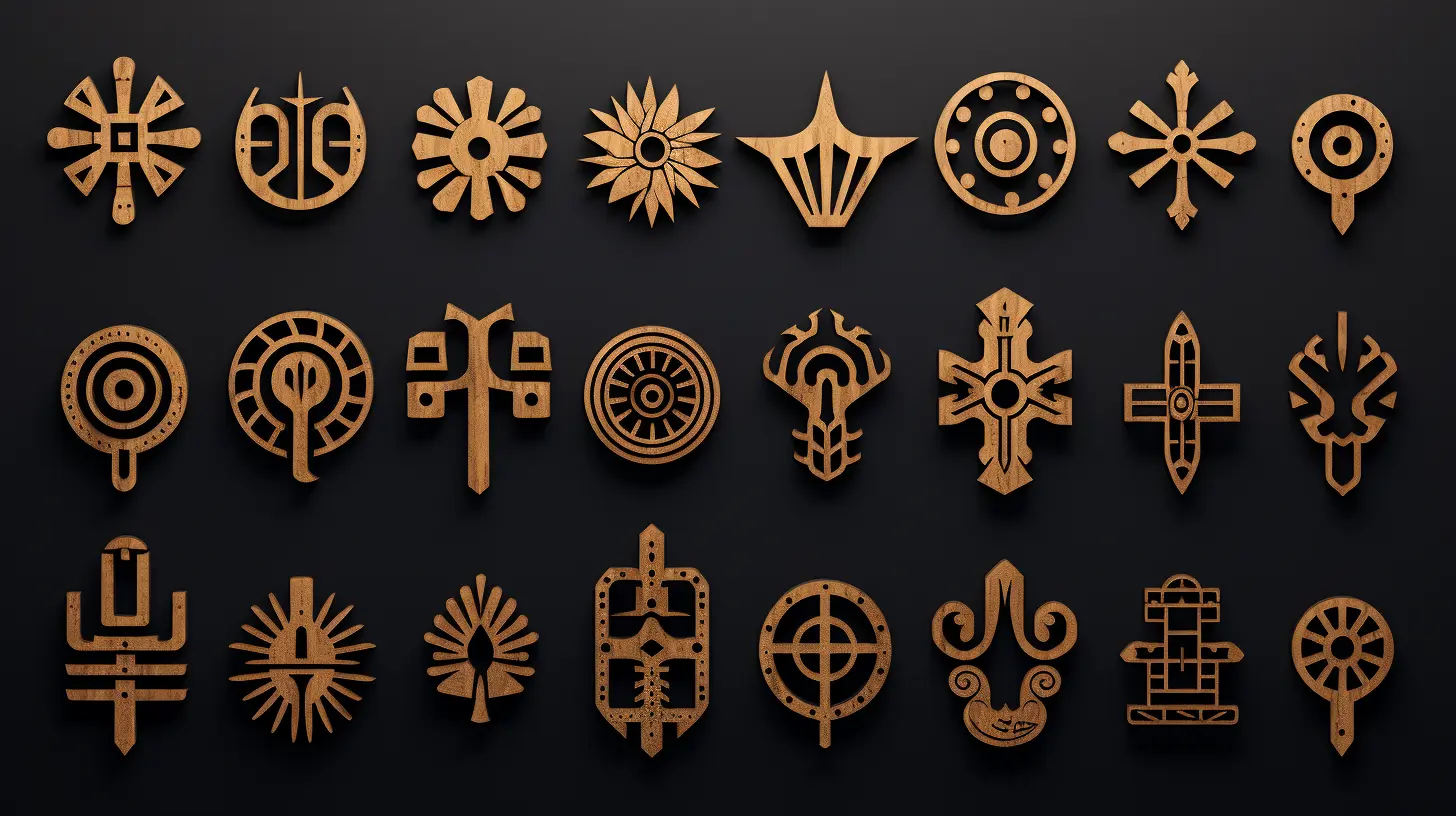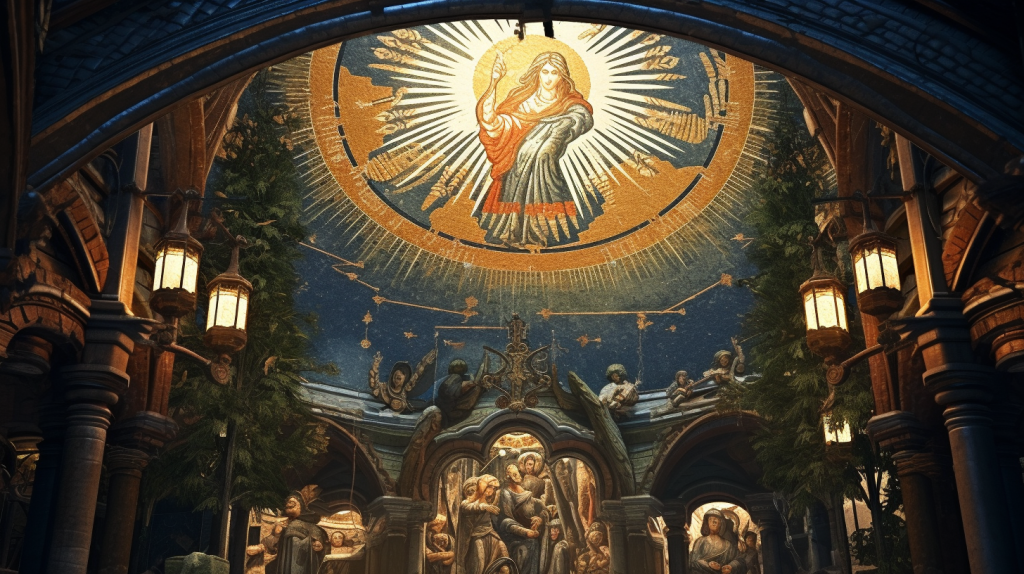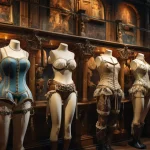
Adinkra
Unveiling Adinkra: A Cultural Tapestry in Fashion
Unveiling the Cultural Tapestry of Adinkra Symbols: Explore the rich history, symbolism, and influence on fashion of these Ghanaian symbols.
Origins of Adinkra Symbols
The origins of Adinkra symbols can be traced back to the Gyaman people of Ghana and Côte d’Ivoire, where these symbols were first created and used. The Gyaman people originally printed these symbols on cloth for royals to wear at important ceremonies, showcasing the intricate connection between culture and artistry. This historical context sheds light on the traditional significance of Adinkra symbols and their deep-rooted association with ceremonial practices and royal attire. The word “adinkra” itself is rooted in the Twi language, signifying “fabric dyed with red and black stripes and worn as mourning”. This etymological connection reflects the profound cultural and emotional significance attached to Adinkra symbols, adding a layer of depth to their origins and usage.
Furthermore, the earliest known use of the word “adinkra” can be traced back to 1925, highlighting the longstanding presence of these symbols in the cultural fabric of Ghana and Côte d’Ivoire. The symbols were not merely decorative; they held a sacred and ceremonial role, adorning royals during significant events and rituals, contributing to the rich tapestry of tradition and heritage. The historical evolution of Adinkra symbols from their origin among the Gyaman people to their enduring presence in contemporary cultural contexts showcases the resilience and timelessness of these symbols as enduring emblems of cultural identity and expression.
Additionally, Adinkra symbols have evolved to encompass a wide array of meanings and concepts, from representing virtues and proverbs to embodying spiritual and philosophical significance. This evolution further underscores the depth and complexity of Adinkra symbols as a unique form of visual storytelling and cultural expression, transcending their historical origins to become a timeless and versatile cultural treasure.
The Language of Adinkra
Adinkra serves as a unique writing system used by the Akan peoples of Ghana, incorporating symbols that represent a wide array of concepts and marking various surfaces such as fabrics, walls, and pottery. These symbols not only serve a decorative function but also convey traditional wisdom, aspects of life, and environmental concepts, making them an integral part of Akan culture and identity [1]. The intricate fusion of visual symbolism and cultural significance within the Adinkra language reflects the profound depth and complexity of Akan heritage, offering a window into the rich tapestry of beliefs, values, and traditions embedded within these symbols.
The use of Adinkra symbols extends beyond mere decoration, encompassing a deeper layer of representational significance that communicates profound truths and philosophies. For instance, the “Gye Nyame” symbol represents the supremacy of God, while “Sankofa” symbolizes the importance of learning from the past. These symbols are not just artistic expressions but embody profound meanings and philosophies, signifying the enduring relevance of Adinkra language as a vessel for cultural expression and storytelling. The incorporation of Adinkra symbols into various aspects of life, from textiles to architectural features, further emphasizes their multifaceted nature and their role as carriers of tradition, wisdom, and identity within Akan and African culture.
The Symbolism Behind Adinkra
The symbolism behind Adinkra symbols encompasses a wide array of concepts, each with its own associated meaning and significance. For example, the “Gye Nyame” symbol, depicting a stylized form of a cross-like symbol with a circle in the center, signifies the omnipotence and supremacy of God in the Akan belief system. This symbol serves as a visual representation of the central tenets of faith and spirituality within Akan culture, embodying a profound and enduring significance that transcends mere decorative expression.
In addition, many Adinkra symbols have their own associated Akan proverbs, further enriching their depth and significance. The proverb associated with the Sankofa symbol, “Se wo were fi na wosankofa a yenkyi,” translates to “It is not taboo to go back and fetch what you forgot,” emphasizing the value of introspection and learning from one’s history. This intricate fusion of visual symbols and oral tradition highlights the richness and complexity of Adinkra symbolism, serving as a conduit for the preservation and transmission of cultural wisdom and heritage.
Furthermore, Adinkra symbols represent the richness of Akan and African culture, embodying a concise way to convey deep truths in visual form. Each symbol carries a unique narrative, weaving together history, philosophy, and tradition into a visually captivating and culturally significant expression. This profound symbolism extends beyond mere aesthetic appeal, serving as a testament to the enduring legacy and cultural significance of Adinkra symbols within the Akan and African cultural landscape.

Adinkra in Traditional and Modern Use
Traditionally, Adinkra cloths were exclusively worn by royalty and spiritual leaders during funerals and other significant occasions in Akan culture, showcasing the reverence and importance attached to these garments. This traditional usage of Adinkra cloths underscores the deep-rooted cultural significance and historical prestige associated with these symbols, reflecting the rich tapestry of Akan traditions and customs. The exclusive association of Adinkra cloths with royal and ceremonial contexts adds a layer of cultural depth and historical resonance to their traditional use, serving as a testament to their enduring significance within Akan society.
In contemporary contexts, Adinkra symbols have evolved to transcend their traditional role, finding expression in modern fashion, design, and various other mediums. These symbols are now widely incorporated into logos and emblems to promote ideas and causes, signifying the enduring relevance and adaptability of Adinkra symbolism in a dynamic, modern context. Additionally, Adinkra symbols are now prominently featured on T-shirts and jewelry, serving as visual representations of concepts such as unity, strength, patience, and wisdom, thereby infusing these qualities into modern fashion and design. This seamless integration of Adinkra symbols into diverse modern contexts demonstrates the enduring cultural resonance and timeless relevance of these ancient symbols, bridging the gap between tradition and contemporary expression.
Furthermore, the multifaceted use of Adinkra symbols in modern applications, from fashion to branding, reflects their enduring appeal and adaptability in diverse cultural and creative contexts. The evolving role of Adinkra symbols from their traditional use to their contemporary applications underscores their enduring significance as timeless emblems of cultural identity and expression within Akan and African culture. This seamless fusion of tradition and modernity serves as a testament to the enduring legacy and cultural resonance of Adinkra symbols in the dynamic tapestry of Akan and African heritage.
The Creation of Adinkra Cloth
The creation of Adinkra cloth is deeply rooted in the rich cultural traditions of the Akan people, particularly in Ghana. This intricate process involves the skillful marking of Adinkra symbols onto the fabric, which is a harmonious fusion of artistic expression and cultural significance. The cloth is traditionally made by hand, with each symbol being meticulously printed or stamped onto the fabric using a special dye or ink.
The creation of Adinkra cloth holds deep cultural significance, as it is not merely a decorative fabric, but a visual representation of traditional wisdom, life principles, and the environment. This traditional practice has been passed down through generations, preserving the heritage of the Akan people and their unique storytelling through symbols. For instance, the Adinkra symbol “Sankofa,” which depicts a bird with its head turned backwards, signifies the importance of learning from the past. This symbol is a poignant reminder of the Akan proverb “Se wo were fi na wosankofa a yenkyi,” which translates to “It is not taboo to go back and fetch what you forgot.” The inclusion of such symbols in Adinkra cloth serves as a testament to the profound cultural heritage and wisdom encapsulated within this time-honored textile tradition.
So, as we delve into the realm of Adinkra symbols and their embodiment in fabric, we are not just exploring the physical creation of cloth, but unraveling the intricate threads of cultural heritage and storytelling woven into each symbol, creating a tapestry of tradition and wisdom.
Adinkra’s Influence on Fashion Design
Recently, a fascinating project delved into designing fabric and garments infused with Adinkra influence, demonstrating the enduring impact of these symbols on fashion and design. The motifs present in these fabrics serve as a means to communicate profound meanings, bridging the gap between tradition and contemporary fashion. The experimentation with different color combinations further showcases the adaptability of Adinkra symbols in modern design.
Adinkra symbols have found their way into modern fashion through various mediums, including clothing, jewelry, and accessories. These symbols, such as Gye Nyame, Sankofa, and Dwennimmen, are not only visually captivating but also carry deep cultural significance, adding a layer of richness to the fabric and design they adorn. For example, the use of the Sankofa symbol in clothing designs not only adds aesthetic appeal but also conveys the powerful message of learning from the past to move forward, making it a poignant and meaningful addition to any fashion piece.
Furthermore, the incorporation of Adinkra symbols in contemporary designs represents a fusion of tradition and modernity, fostering a connection to the rich cultural heritage of the Akan people while embracing the evolution of fashion and design. This blending of the old and the new creates a narrative within each garment, inviting wearers to engage with the stories and wisdom encapsulated in these timeless symbols. The influence of Adinkra symbols on fashion design extends beyond mere aesthetics, as it serves as a powerful reminder of the enduring legacy and significance of these cultural emblems in the realm of style and self-expression.
Adinkra Symbols and Cultural Significance
Adinkra symbols continue to hold immense cultural significance, being integrated into various aspects of life, from fabrics and pottery to architectural features, serving as a poignant representation of traditional wisdom and the environment. Their dual function as both decorative elements and carriers of deep meaning underscores their enduring relevance in Akan and African culture.
Adinkra symbols are deeply intertwined with the rich tapestry of Akan and African culture, embodying profound truths in visual form. The symbols not only represent concepts but also convey traditional wisdom, aspects of life, and proverbs, often embodying ideas such as unity, strength, patience, and wisdom. For example, the popular Adinkra symbol “Sankofa” visually portrays the importance of learning from the past, as it features a bird with its head turned backward while its feet face forward, symbolizing the significance of drawing from history to build a successful future.
Furthermore, the symbols are not confined to the past but continue to be relevant in modern society, as they are incorporated into contemporary items such as T-shirts and jewelry, adding a touch of cultural depth to everyday fashion and accessories. This seamless blend of tradition and modernity showcases the enduring appeal and adaptability of Adinkra symbols, making them a vibrant and dynamic part of both historical and contemporary African identity.
Tthe vibrant tapestry of Adinkra symbols reflects the rich cultural heritage of the Akan people and their enduring legacy. These symbols have transcended time, seamlessly blending tradition with contemporary fashion, and continue to leave an indelible mark on the fashion and design landscape. From the royal ceremonies of the past to the modern runways of today, Adinkra symbols carry the weight of centuries of wisdom, tradition, and cultural significance, making them a compelling subject of exploration for fashion enthusiasts and cultural aficionados alike.





